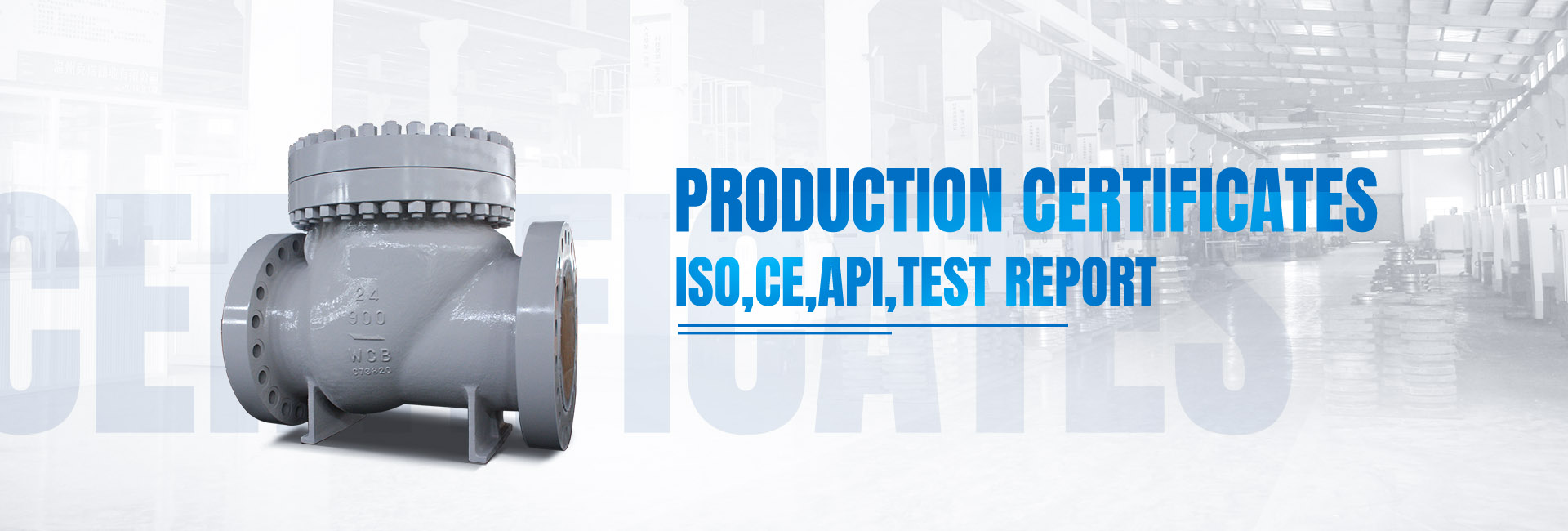Structure and Dimensions
1. Appearance characteristics
The main reasons are that the end of the valve stem is not processed, the valve stem and the handwheel cannot be closely combined, the valve opening and closing is not flexible, or the wall thickness of the valve body, the diameter of the valve stem, and the length of the structure do not meet the standards.
2. Inspection method
The valve structure can be inspected by visual inspection. The valve body wall thickness generally uses an ultrasonic thickness gauge, and the structure length generally uses a vernier caliper, tape measure, depth gauge and other tools and instruments. When measuring the wall thickness, the part to be measured should be polished smooth to avoid affecting the accuracy of the test. The minimum wall thickness of the valve body generally occurs on both sides of the flow passage or at the bottom of the valve body.
3. Defect assessment
Valve structure, valve body wall thickness, structure length, valve stem diameter unqualified valve is directly judged as unqualified.
Trachoma and Pores
1. Appearance characteristics
Trachoma is a common defect on the surface of casting valves, mainly on the outer surface of the valve. There are sand or white slag inside the trachoma, and the shape is irregular and the depth is different. The pores generally appear in the interior of the casting valve, on the surface or near the surface, the surface is relatively smooth, round or oval, sometimes isolated, sometimes clustered together, often coexisting with slag inclusion or shrinkage porosity.
If it is a reactive pore, it is usually not large, and it is not too deep on the surface of the casting or below the surface of the casting. If it is an invasive pore, the area is slightly larger, and it is often circular, oval or pinhole-shaped.
2. Inspection method
Blisters and pores can be found by visual inspection. For the blisters and pores inside the valve body, a flashlight can be used, and the depth of the defect can be judged by the coating method or thin iron wire. Attention should be paid to the parts with different paint colors or obvious pits. If necessary, the paint can be removed with tools such as screwdrivers to prevent the defective parts from being concealed.
3. Defect assessment
The presence of pores or blisters on the surface of the valve will reduce its effective bearing area, easily cause stress concentration and reduce the impact resistance, fatigue resistance and compactness of the casting, and also have different effects on the corrosion resistance and heat resistance of the casting.
Generally, the pressure-bearing parts of the valve body and the bonnet, the flange sealing surface is not allowed to have pores and blisters. Any 100mmX125mm area with no more than 3 pores and no more than 1.0mm deep pores or blisters.
For deep uncertain pores or trachoma, strict judgment should be made to prevent penetrating defects. As long as the defects in the lead screw, handwheel, handle and bracket do not seriously affect the appearance, strength, and performance of the valve, they can be accepted as qualified products.
Shrinkage and Porosity
1. Appearance characteristics
Shrinkage cavities and porosity are generally located at the last solidified part of the valve (hot joint) or at the structural mutation part. Shrinkage cavities and loose inner surfaces have no oxidation color, irregular shapes, rough pore walls and many impurities and tiny pores.
2. Inspection method
Shrinkage cavities and loose appearance are not easy to find, and leakage generally occurs during the pressure test. During the experiment, attention should be paid to the gate, riser, and shrinkage of the valve body. After the experiment, the above parts should be touched by hand to prevent the defects from being missed by the paint.
3. Defect assessment
Shrinkage holes can easily cause the structure of the valve to be discontinuous, and shrinkage holes or porosity should be directly judged as unqualified.
Crack
1. Appearance characteristics
Cracks generally appear at the hot joints and structural sudden changes where the two walls of the forged valve body meet, such as the flange root and the convex surface of the valve body wall. The depth of the crack is shallow, and it is generally dominated by hairlines. Warmly asks the shape tortuous and irregular, the gap is wide, the section has serious oxidation, no metallic luster, and the crack is generated and developed along the grain boundary. Cold cracks are generally straight, and the metal surface at the crack is not oxidized, and the crack often extends through the grain to the entire section.
2. Inspection method
In addition to visual inspection of cracks on the valve surface, the leaves can be inspected by magnetic particle or penetrant inspection.
3. Defect assessment
The existence of cracks reduces the bearing area of the valve, and a sharp gap is formed at the end of the crack, the stress is highly concentrated, and it is easy to expand and cause damage. Usually clearly visible cracks are not allowed, regardless of their location and size are judged to be unacceptable. After the crack is found, it can be ground with a grinding wheel. If it is confirmed that the crack has been completely eliminated, and the surface of the valve has not been damaged, and the thickness is thinned and not obvious, it can be judged as qualified, otherwise it will be processed as a return.
Mechanical Injury
1. Appearance Characteristics
Mechanical damage is the bump damage caused by the valve during transportation, handling, hoisting, stacking, etc., or machining damage caused by cutting, cutting, etc., such as scratches and indentations on the flange sealing surface of convex or flat sealing, Defects formed by non-processing of the riser gas cut surface of castings and the flash cutting of forgings.
When these defects reach a certain depth, they will also affect the quality and life of the valve.
2. Inspection Method
Mechanical damage on the valve surface can be found by visual inspection, and the depth of the defect can be measured with a weld inspection ruler or a depth gauge.
3. Defect Assessment
Radial scratches on the flange sealing surface of convex or flat seals, mechanical damage and defects of the inner edge, and defects such as scratches and bumps on the two sides of the flange sealing surface groove of the ring connection will affect the valve. The tightness of the flange is generally not allowed. If the flange is not sealed, the scratches and mechanical damage on the surface of the valve body and bonnet will not affect the overall quality of the valve as long as the depth is within the allowance range, and it can be accepted as a qualified product. However, sharp scratches must be smoothed to prevent stress concentration.
Post time: Dec-06-2022



